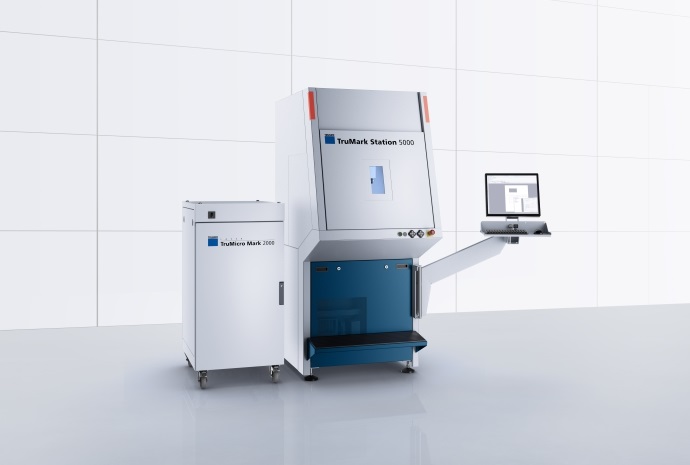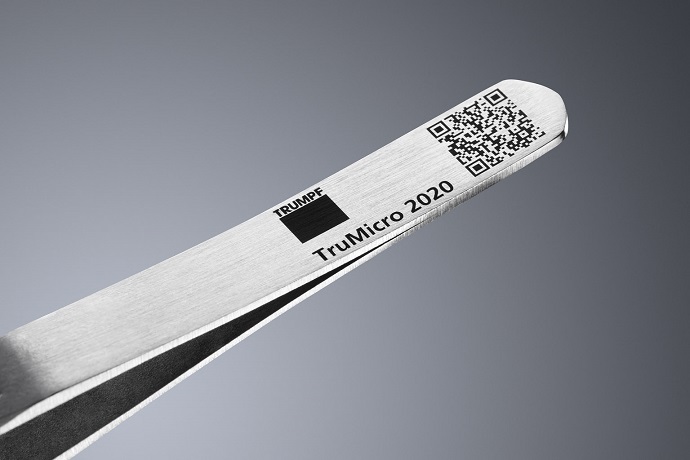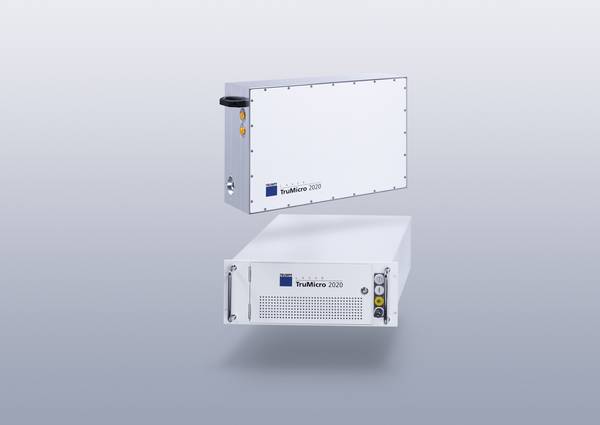Ditzingen, May 31, 2016 – Laser specialist TRUMPF has continued technical development of its ultra-short pulsed lasers and is set to release a new picosecond laser, the TruMicro 2000. The new laser can be used in a wide spectrum of industry applications ranging from high-quality metal engraving to cutting extremely thin films, as well as for corrosion-free marking of medical instruments and chrome-plated plastics. With extremely short laser pulses ranging from 0.4 to 20 picoseconds and a peak power of 20 microjoules, the TruMicro 2000 is capable of so-called cold processing: as soon as the material being processed by the laser pulse begins to register a thermal process, it's already over. The result is that any undesirable thermal effects, such as micro-fissures and residual melt that would otherwise arise during material processing, are nowhere to be found due to the very small heat-affected zone. This makes extremely precise applications such as smooth surfaces and deep black markings possible on a wide variety of materials.

TruMicro Mark 2000 with TruMark Station 5000
The TruMicro 2000 is ready for use in this turnkey solution complete with scanner, cooling system and software controls.
Photo: TRUMPF
Markings without the rust
The new laser is especially attractive for applications in the area of medical technology, particularly for reusable tools such as surgical instruments and endoscopes. Products such as these require uniform labels in the US market—a requirement which is expected to find its way to Europe soon—so that they can be easily traced. The new TruMicro 2000 is capable of marking even to highly reflective materials. These markings remain corrosion-free despite daily cleaning and sterilization, and exhibit a strong visual contrast. The high peak pulse power of the picoseconds laser creates a nanostructure on the surface of the work piece. The rough surface produces a sort of light trap which reduces the diffuse scattering of the light and evokes a permanently black mark. The special quality of this process is that the steel's chromium oxide layer remains intact, which prevents corrosion from forming. Up to this point results like this have been unachievable with traditional marking lasers that operate in the nanosecond range. The advantages offered by the TruMicro 2000 are also seen with chrome-plated plastics used in common consumer products, such as showerheads and automobile interiors.
The TruMicro 2000 is capable of much more than just marking. It can be used for a multitude of microprocessing applications, some of which are also found in the aforementioned medical technology industry. Picosecond lasers are enjoying an increasingly important role in the production of stents used to keep blood vessels open. An essential quality of stents is smooth surfaces free of any burrs. These help prevent blood platelets from accumulating. Today, medical professionals are moving away from stents made from steel in favor of those produced from nitinol, an alloy which causes less fatigue and is better received by patients. Yet nitinol is extremely heat sensitive and nearly economically unfeasible to produce using standard processes. This is where picosecond lasers come in. Due to cold processing, the TruMicro 2000 makes it possible to prepare the surface of the stent without damaging the material.

Black marking
The TruMicro 2000 is capable of marking even to highly reflective materials. These markings remain corrosion-free despite daily cleaning and sterilization, and exhibit a strong visual contrast.
Photo: TRUMPF
Flexibility and versatility
The TruMicro 2000 can service a broad spectrum of microprocessing applications ranging from marking, engraving and structuring to cutting and ablation. A host of advanced features make this level of flexibility possible. The Pulse on Demand feature, for example, enables the operator to apply the laser pulse to any desired location with micrometer accuracy. This allows an extremely precise work when processing a wide range of different materials. The TruMicro 2000 also features a double power regulation which makes it possible to precisely set the power from pulse to pulse. This ensures that the pulse energy is fully available from the first to the last pulse. The power regulation feature functions with unwavering consistency, even in the face of fluctuating temperatures.
The new TruMicro 2000 picosecond laser series comes in three different packages. The simplest of these is a true OEM beam source which can be integrated into other systems. The second package is a unit consisting of a beam source, scanner, cooling system and software controls for marking. In the third option, the laser comes as a fully-integrated solution in the TruMark Station 5000 marking station.












